The present article deals with the review of medieval Azerbaijani fine art, where grotesque used as an artistic method of exaggeration of the image. Canonical art of medieval printing miniature could not prevent miniature artists to express their attitude to the image. The most obvious grotesque images are seen in miniature of the 15th century, which were created in so-called «Turkomen style». Grotesque images flourish again in the 19th century in times of Gadjar dynasty.
In conversation, the word grotesque usually means «strange», «fantastic», «eccentric» or «ugly», and thus is often used to describe strange or distorted forms, such as masks at a carnival or gargoyles at cathedrals. In addition, the concept of grotesque can refer to a specific kind of ornament, which combines visual and decorative motifs. Such combinations, as a rule, have a fancy or fantastic character.
Introduction
The grotesque vision of the world and its reflection in bizarre forms that transcend reality existed at all times. Ever since man began to reflect events and phenomena of the world, life through the creation of a graphic, a visual image appeared and the grotesque, as an artistic embodiment of the internal reaction to an event or personal assessment of the person.
«Allegorical» self-expression in the visual arts is observed in the middle ages when Islam became the leading religion in Azerbaijan. Even the negative attitude of Islam towards the image of living beings could not prevent the emergence of images in which humor, sarcasm, and grotesque and whimsical are the main semantic factors in the perception of the image.
As you know, in medieval Azerbaijan art was mainly developed in the context of book illustration, which is a miniature image illustrating certain episodes of the literary text.
Materials and methods
The grotesque form of expression of the author’s attitude to the described or depicted object (item) has always arisen from the desire to express their subjective attitude. Along with the generally accepted point of view, artistic canon and religious tradition, medieval masters and artists of Azerbaijan expressed in their works a subjective opinion or position in relation to the depicted.
The most extensive opportunities for expressing your subjective attitude to the character or event were the medieval masters of book miniatures. Classical Eastern literature contained numerous images, which were absent from its psychological, ethical and aesthetic, or philosophical interpretation. The method of artistic grotesque allowed medieval artists to fill these gaps literary texts by creating images, the form that have not only literary content, but also a kind of «subtext» that allows you to perceive the image as it «saw» the artist.
Medieval manuscripts, such as «Jamiat-Tavarih» (1314) Rashid ad-Din, al–Biruni, drawings of the medieval artist Siyah Kalem and others, indicate the widespread use of grotesque artists of the middle ages.
Book miniature and exaggeration of the image
Mainly illustrated works of the classics of Eastern literature, such as Nizami Ganjavi, Firdausi, Hafiz, and others. However, illustrators-miniaturists have created their illustrations, and historical narratives, such as «Jamiat-Tavarikh» («General history») of Rashid al-Din, «Al-Attar al-Bagiyyah» («Chronology of Ancient Nations»), al-Biruni, «Kitabtabai al-Haywan vahavashshiwa Manafi a daicha» (the book features animals and use their organs») Ibn Bukhtishu etc. The thumbnail image was created and on separate sheets that were in albums with sample pictures – Muraka. There are also separate drawings of various fantastic images of divas, jinns and people with frankly sarcastic, grotesque interpretation of an image. A large group of similar drawings created in the so-called «Turkmen style» refers to the XV century and collected in the so-called «Saray Album» («Fatiha Album»), stored in the Istanbul Museum «Topgapa» (Hasanzade, 1999:121-126).
A large number of grotesque drawings bordering on satirical caricature are available in the so-called «Dietz Albums» and are kept in the «Berlin Museum of Islamic art». Most of the grotesque images of these albums are date back to the XV century and are made by Tabriz and Uighur masters (Hasanzade, 1999:53-62). Individual images were created and objects of decorative art such as ceramics, toreutics, and even jewelry, which in the era of Qajar (XIX century) created a miniature image of the technique of painted enamel.
Browse a huge number of images of the middle ages revealed a considerable number of images in which the grotesque style and method of images used deliberately to exaggeration of the visual image. A characteristic feature of such an image is the expression of individual details of the image, exaggeration of certain portrait features, focusing on individual details of the image, stylization of visual forms, conscious distortion of proportions, anatomy and exaggeration of individual parts of the image in order to enhance their content and semantic accents.
The earliest examples of miniature painting that have the grotesque nature of the image, is a manuscript of the 13th century («The book features animals and use their organs») Ibn Bukhtishu (Library of Pierpont Morgan. New York.) (Hasanzade, 1999:105-107). The manuscript and its miniatures clearly have a reference character, but at the same time, the artist, who depicted animals, sometimes could not resist expressing a personal attitude to the image of an animal or a bird (figure 1). He sometimes gives those facial expressions and facial features, figures – human features, easily recognizable and perceived in a certain emotional way.

Picture 1 – The miniature from the manuscript ‘Manafi alKhaiwan’. Ibn Bukhtishu. 1294-99. Maraga. Stored New York

Picture 2 – The miniature from the manuscript ‘of Jami’ al-Tawarikh’. Rashid ad-Din. 1314. Tabriz. Stored Edinburgh
Among such images can be called miniatures «Bear and monkey», «Wild boar», «Hares», «Eagles», «Bears», etc., in which the artist, along with visually recognizable features of the animal, gave them definitely human traits. Grotesquely images, the artist presented the image of eagles in the form of «fighters and bullies», the image of a bear and monkey-like «contrast of the characters» the image of the wild boar as «hot-tempered and ready to pounce on all» of the petty tyrant. In miniature, «Bears» easily recognized the human nature of the relationship, characterizing the relationship «mother and child».
In all these images, the artist shows animals, human traits, using the method of grotesque distortion and expression of individual physiological details.
Groteskovosti, whimsical, sometimes – sarcasm is different and some of the other miniatures of the manuscript of the 14th century, made in Tabriz «Jamiat-Tavarikh» Fazlollah Rashid al-Din (Edinburgh. University library.) (Rashid ad-Din, 1990).
Representing historical scenes and characters, miniatures of this manuscript were created by several artists. The grotesque character of the images is available in miniature «Samson destroys the temple of the Philistines» (pic. 2). In miniature is depicted with deliberately exaggerated proportions and the growth of Samson, who by his mighty power destroys the castle «calico-like» of the Philistines. Here the artist deliberately exaggerated the dimensions and figures in order to emphasize the heroic power of Samson.
XV century in the history of Azerbaijani miniatures is characterized by a wide spread of the socalled «Turkic style» in book miniatures and individual drawings. Towards the end of the century, this style will change, acquiring new artistic especially and will morph into a «Timurid style».
Miniatures made in the «Turkic style» are freer in the interpretation of the characters and scenes. There is a version that the basis of this style was laid by artists-Uighurs. Miniatures of this style contain folk images, characterized by the careful study of movements, plastics, facial expressions of the characters depicted. Images are unlike grotesque, sometimes-cartoon character, with which the artist expressed his attitude to what is happening.
The greatest artist who worked in this style, dubbed «siyah kalem» («black kalem») is Muhammad Siyah Kalem, who created a gallery of bizarre images, bordering on phantasmagoria (pic. – 3, 4, 5). Various images of Jinn, demons, divas, amaze with their hypertrophied imagery. In these images, the viewer can easily recognize the inherent character traits of a person, hidden intentions. The grotesque form is adjacent to the incredible realism in the disclosure of the character of the image. Among these miniatures can be called «the Fight of the Demon dragon», «Conversation», «Werewolves», «Bound Demons,» «Dance of Demons», etc.
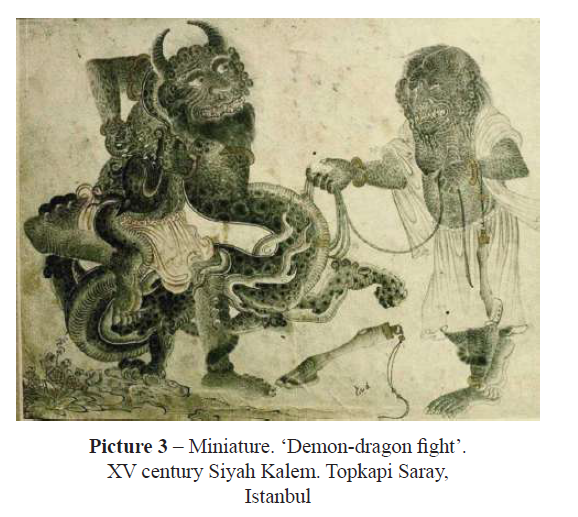
Picture 3 – Miniature. ‘Demon-dragon fight’. XV century Siyah Kalem. Topkapi Saray, Istanbul
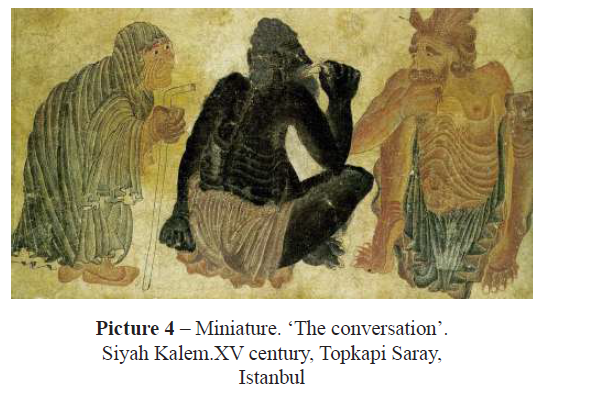
Picture 4 – Miniature. ‘The conversation’. Siyah Kalem.XV century, Topkapi Saray, Istanbul
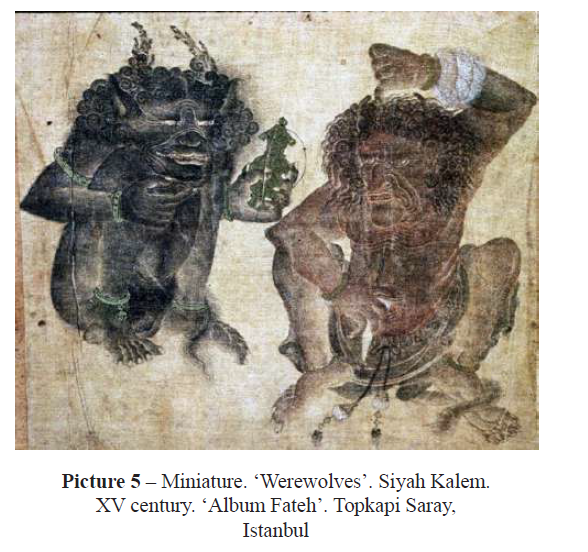
Picture 5 – Miniature. ‘Werewolves’. Siyah Kalem. XV century. ‘Album Fateh’. Topkapi Saray, Istanbul
It is obvious that the creation of folk images, various demons – an attempt by the artist «to communicate something more» than depicted. The images of the so-called «demonology» Siyah Kalem is a weird combination of human, animal and fantastic traits to create the grotesque nature of the image.
Miniatures created in the «Turkic style» are distinguished by greater freedom of artistic expression. Artists who worked in this style, unlike Tabriz, Herat, Shiraz artists, were less constrained by the rigid framework of the visual сanon. This freedom allowed them to express irony, sarcasm, humor, display the sympathy and antipathy of the artist to the depicted character.
One of these miniatures is the famous «wedding procession» from Istanbul’s «Fateha Album», stored in the Topgapi Museum (pic. 6). In miniature, the artist depicted the bride moving into the house of her future husband. The seemingly trivial scene is filled with characters with cartoon faces and ambiguous facial expressions. The presence of some of the characters, accompanying the bride, the characteristic of dervish axe tabarzin says about what is depicted accompanied by the dervishes of the bride to Sheikh. The image of the Sheikh dervish with the same ax-tabarzin, waiting for his bride, placed in the background, just around the corner.
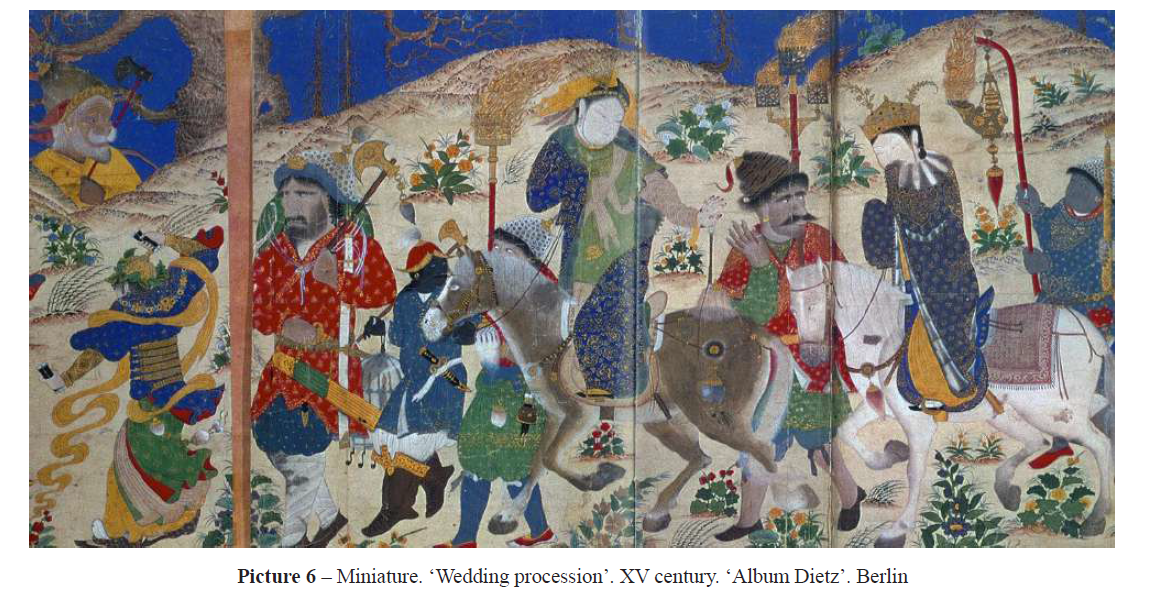
Picture 6 – Miniature. ‘Wedding procession’. XV century. ‘Album Dietz’. Berlin
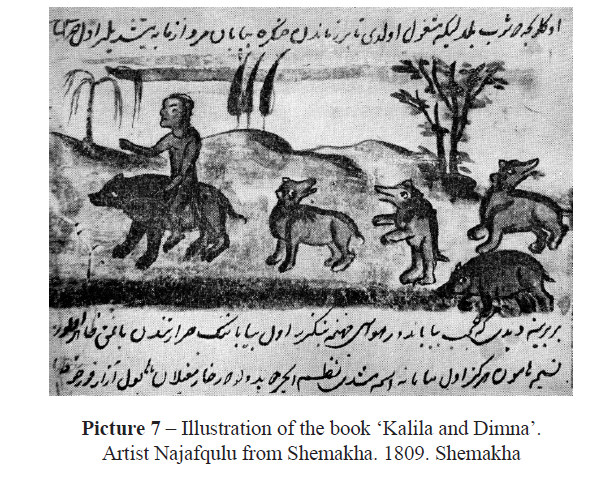
Picture 7 – Illustration of the book ‘Kalila and Dimna’. Artist Najafqulu from Shemakha. 1809. Shemakha
The grotesque exaggeration of the satirical hell of the dervishes said about the negative attitude of the artist to the community of dervishes. The entire procession resembles a masquerade with fake bodyguards accompanying the bride and her maid of honor to the groom.
Grotesque, as a method of exaggerating the image, giving it a hidden meaning and strengthening the figurative features of the characters by hyperbolization, found in the art of the XIX century. The age of Qajar and the art of Qajar loved ambiguity and allegory. Symbolic transformations of images, deformations and free use of the «mounting method» allowed artists to create images with an internal subtext. However, most of all, the artists of this period consciously chose those subjects and those characters that allowed to use the method of grotesque and cartoon to enhance the figurative characteristics of the character or event. Similar images, in large numbers, are among illustrations to the newly fashionable, the book «Kalila and Dimna» (1809), in which in the form of fables, various stories and fantastic stories, ridiculed various characters and their actions. Edifying nature of the book allowed artists to operate freely figurative characteristics of the depicted characters. The famous artist Najaf Kuli provides the book published in Shamakhi with illustrations from Shamakhi (Pic. 7).
Conclusion
A review of the works of medieval fine arts of Azerbaijan allows expressing the idea of using the grotesque method even in the canonical medieval art. Artists of this period were using grotesque as a method of creating an image, managed to give their characters characteristic, recognizable features that had a particular moral or social assessment of their time.
References
- Rashid ad-Din. (1980). «Jamiat-Tavarikh». Vol. 2, part I. introduction and instructions A. Ali-zade. Moscow.
- Hassanzadeh J.Yu. (1999). The origin and development of Tabriz miniature painting in the late XIII – early XIV centuries. Baku. «Ozan.»
- Hassanzadeh J.Yu. (2014). Magic tales of Tabriz. «The Irs Publishing House».
- Brittenitsky L.S., B. V. Veimarn (1976). The art of Azerbaijan, IV-XVIII centuries. Moscow: «Art». Kerimov K.J. (1980). Miniature painting of Azerbaijan. Baku: Ishig.
- Kerimov K.J. (1983). Miniature painting. Baku: Languages,
- Kerimov K.J. (1983). Nizami «Hamsa» miniatures. Baku: Languages. Kerimov K.J. (1993). Sadiq bey Afshar. Baku: Ishig (in Azeri) K.Kerimov (1993). «Sultan Muhammad, his school».
- Kaziev A.Yu. (1977). The artistic design of the Azerbaijan hand-written book of the XIII-XVII centuries. Moscow: The Book. Hasanzadeh J. (1999). «The birth and development of the Tabriz school of miniature painting in the late 13th – early 15th centuries». Baku: Ozan.